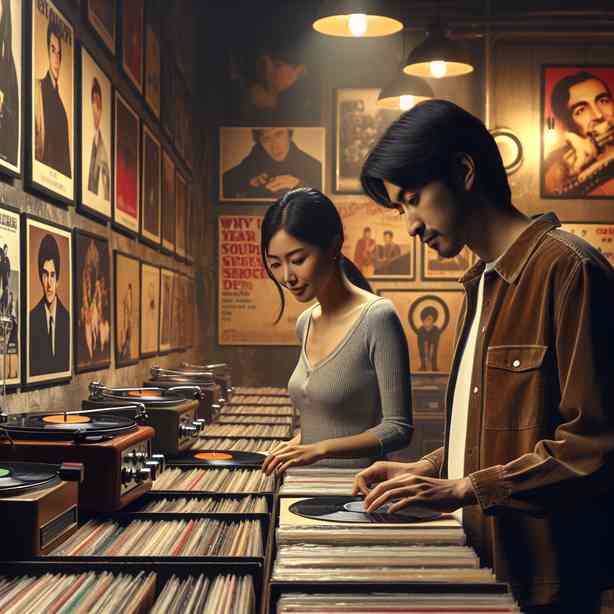
Vinyl records have enjoyed a remarkable resurgence in popularity in recent years, captivating both audiophiles and casual listeners. As digital music formats dominate the industry, the enduring allure of vinyl seems almost paradoxical. What is it about these analog discs that sets them apart? In this exploration, we will delve into the unique characteristics of vinyl that contribute to its distinct feel and sound, examining aspects such as tactile experience, sound quality, nostalgia, and the cultural implications of this enduring medium.
At the core of the vinyl experience is the tactile interaction that it provides. Unlike digital music, which is often experienced through screens and earbuds, vinyl demands a more engaged approach. The act of handling a record—removing it from its sleeve, placing it on a turntable, and gently lowering the needle—creates a ritualistic experience. This tactile engagement fosters a deeper connection between the listener and the music, as the physicality of vinyl transforms listening into an active participation rather than passive consumption.
The artwork on vinyl records also plays a significant role in enhancing this sensory experience. The-large format of vinyl covers allows for intricate designs and larger visual storytelling that’s often lost in digital formats. The album art invites listeners into the world of the music, often evoking emotions and memories associated with the songs. Many collectors cherish the artwork almost as much as the music itself, forging connections that digital album covers simply cannot replicate.
Sound quality is another critical aspect where vinyl often reigns supreme in the eyes of many music enthusiasts. The analog nature of vinyl records means that the audio is captured in a continuous wave, preserving the nuances and subtle details that some argue are lost in digital compression. While digital formats, such as MP3s, prioritize convenience and portability, they often sacrifice sound fidelity. Audiophiles contend that vinyl offers a warmer, more authentic sound characterized by subtle harmonics, dynamic range, and a richness that resonates emotionally with listeners.
Immersive listening experiences are commonly associated with vinyl, which often encourage extended play sessions where the listener can truly connect with the music. The act of flipping the record for another side fosters patience and a sense of engagement that is sometimes absent in the fast-paced world of streaming. Each track becomes a carefully curated journey through the artist’s intent, allowing listeners to savor the music in its entirety instead of skipping to the next song.
Vinyl’s resurgence also carries a potent wave of nostalgia that resonates with many people. For those who grew up during the height of the vinyl era in the 1970s and 1980s, purchasing records was often an event. Many fondly recall the thrill of scouring through record stores, discovering new artists, and collecting their favorite albums. This nostalgia has become a powerful driving force behind the renewed interest in vinyl, appealing to both older generations who want to relive those memories and younger generations eager to explore music in a more tangible format.
The cultural significance of vinyl cannot be overlooked. The rise of independent record stores and vinyl markets has created vibrant communities where music lovers gather to share their passions, explore new sounds, and exchange knowledge about artists and genres. This communal aspect of vinyl listening fosters connections between individuals that are often lost in the era of digital streaming, where music consumption can feel solitary and disconnected.
Moreover, the sustainable practices associated with vinyl production have gained momentum as consumers become more conscious of their impact on the environment. Many independent labels emphasize eco-friendly manufacturing processes, using recycled materials and sustainable practices to produce their records. This commitment to sustainability resonates with a growing demographic of environmentally aware consumers who are seeking more ethical ways to engage with their favorite art forms.
Despite the numerous advantages of vinyl, it is essential to acknowledge its limitations. Vinyl records can be more susceptible to wear and tear over time; they require careful handling, storage, and maintenance to preserve their quality. Additionally, the equipment needed to enjoy vinyl—turntables, speakers, and so forth—can represent a significant investment. However, for many, these challenges are merely part of the journey and investment into the music they love.
As technology continues to evolve, the relationship between vinyl and digital music remains complex. While digital formats offer unparalleled accessibility and convenience, vinyl provides a counterbalance through its authenticity and tactile charm. This duality is not necessarily a competition but rather a coexistence that allows music lovers to select their preferred listening experience based on their moods and circumstances.
In conclusion, the fascination with vinyl records is deeply embedded in its unique characteristics that transcend mere auditory experience. The tactile interaction, superior sound quality, resonant nostalgia, sense of community, and commitment to sustainable practices merge to create a holistic experience that digital music often lacks. As we move forward in an increasingly digital world, vinyl serves as a reminder of the beauty of analog, a celebration of music as an art form that is meant to be savored. Whether you’re a seasoned collector or a curious newcomer, embracing vinyl may very well enrich your musical journey, allowing you to connect with music in a way that feels both intimate and profoundly rewarding.


